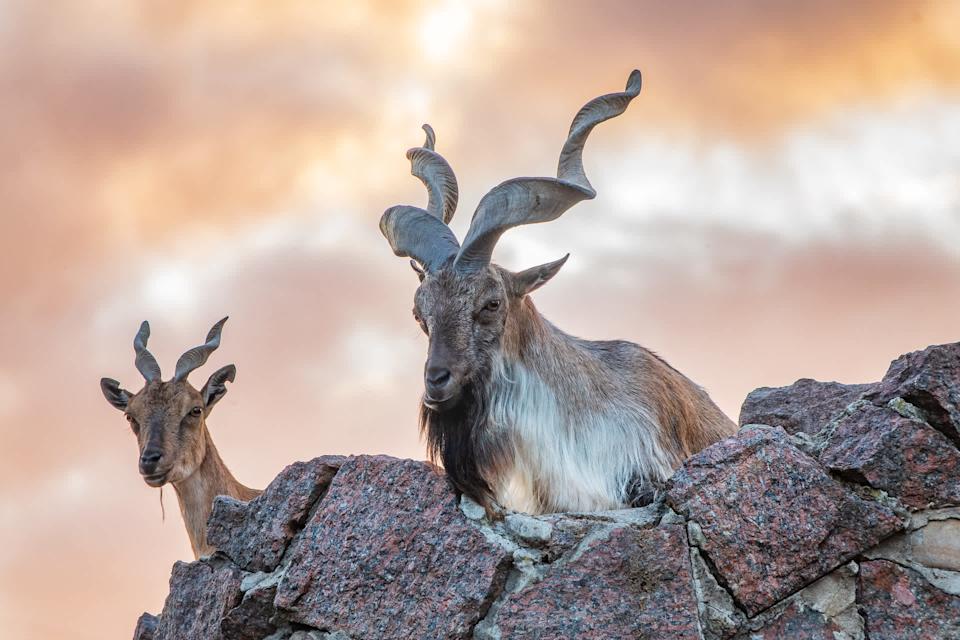A new study has uncovered a troubling reality in the Himalayas: the world’s largest wild goat is losing its home.
As livestock grazing spreads deeper into the alpine zones of the Kashmir region, the already-threatened Kashmir markhor is running out of space and options, according to recent reporting. Scientists say the species may be getting pushed into lower, less nutritious habitats at a critical time in their life cycle.
What’s happening?
As detailed by Mongabay, markhor usually migrate to higher elevations in May and June to give birth and graze on nutritious alpine plants. But this timing now overlaps with a major influx of livestock — mostly sheep and goats — brought in by local herders.
Researchers found that livestock outnumber markhor by more than 30 to 1 during this critical period, pushing them into lower, less suitable areas.
That shift may be hurting young markhors. In one heavily grazed valley, researchers found far fewer yearlings compared with adult females — a sign that fewer kids are surviving their first year.
“This research raises serious concerns for markhor conservation in the region,” said Tawqir Bashir, an assistant professor at Sher-e-Kashmir University, per Mongabay. “The severe competition with livestock for space and resources in summer, combined with the disturbance by herders and herding dogs, will affect their migration patterns as well.”
Watch now: Giant snails invading New York City?
Why is this important?
According to Mongabay, there are only two viable markhor populations in India, in the Pir Panjal and Kazinag ranges. The subspecies is legally protected and classified as “near threatened” by the International Union for Conservation of Nature.
Forced into less than optimal habitats — especially after giving birth — females may struggle to recover body weight and provide for their young, increasing their vulnerability heading into harsh winters.
Markhor aren’t the only hooved wildlife impacted, either, according to Mongabay. This may indicate a collapse of biodiversity, which could create ripple effects that impact the livelihoods of locals by resulting in habitat degradation and lost tourism income.
What can be done about this?
While the study raises red flags, it also points toward solutions. The researchers recommend protecting fawning sites and regulating livestock access in key areas during summer months.
|
Do you think America has a plastic waste problem? Click your choice to see results and speak your mind. |
“The study provides a sustainable and ecologically sound solution to address this issue by recommending regulation of livestock,” Mongabay wrote when paraphrasing Bashir.
Programs like the Kashmir Markhor Recovery Project, launched in 2004, have helped stabilize populations before. Rotational grazing — adopted in parts of India and Kenya — shows how people and wildlife can share the land more sustainably.
Saving the markhor isn’t just about one species. These mountain grazers help keep fragile ecosystems in balance — ecosystems that millions depend on for water, food, and clean air.
Join our free newsletter for good news and useful tips, and don’t miss this cool list of easy ways to help yourself while helping the planet.
Yahoo News – Latest News & Headlines
Read the full article .


